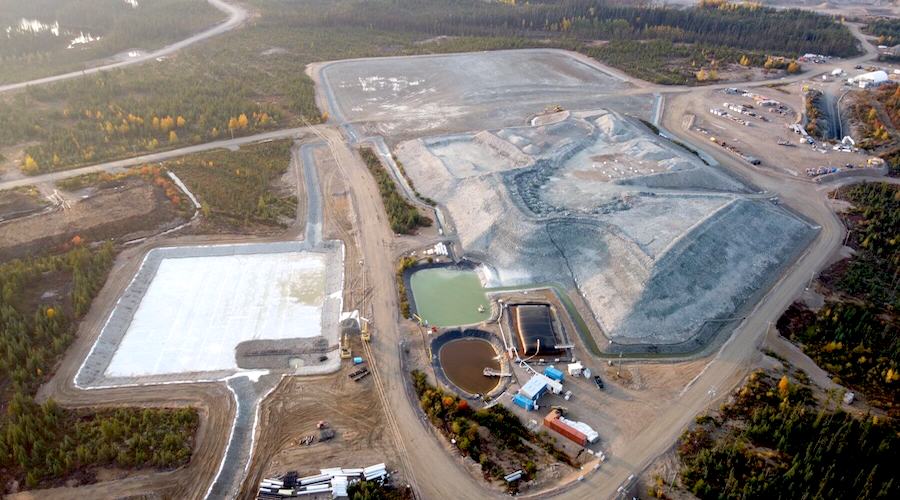Sign up for daily news updates from CleanTechnica on email. Or follow us on Google News!
COP 28 has some good news stories to go with the bad. Prominent among the good news was the Double Down, Triple Up pledge pushed by the Global Renewable Alliance and signed onto by almost 120 countries. A somewhat similar pledge related to nuclear is receiving a lot of media coverage as well. But what do these pledges mean, how likely are they to come to fruition and what countries are missing in action?
Let’s start with nuclear, as it’s much less likely to bear significant fruit. What’s the pledge? To triple nuclear generation capacity by 2050. There are about 440 nuclear reactors in operation today, most of them aging out with significant retirements over the next 20 years eliminating most of them without significant refurbishment costs. There are fewer nuclear reactors in operation today than there were in 2005, and the next decade will see that trend accelerate. 2050 would an achievable time frame if all current nuclear generation countries launched a Nuclear New Deal right now and mobilized their government and industry for a significant scale up. Is that occurring or likely to?
How many countries signed up for it? Only 22, which is interesting, as there are about 30 countries with commercial nuclear generation at present. The full list per the US DOE is the United States, Bulgaria, Canada, Czech Republic, Finland, France, Ghana, Hungary, Japan, Republic of Korea, Moldova, Mongolia, Morocco, Netherlands, Poland, Romania, Slovakia, Slovenia, Sweden, Ukraine, United Arab Emirates, and United Kingdom.
What major nuclear generation countries are missing from the list? China and India. What does that mean? It’s somewhat difficult to tell. China has the world’s biggest nuclear program today, but it’s been struggling. It didn’t meet its 2020 targets. It’s very unlikely to meet its 2025 targets. It peaked in 2018 with seven GW-scale reactors, averaged three reactors per year since, and this year has only put one GW scale reactor and one 210 MW small Gen IV developmental reactor into commercial operation. The growth trend isn’t positive. Meanwhile, renewables, storage and transmission are seeing exponential growth rates. More on that later. Perhaps China doesn’t think it can actually triple nuclear or perhaps it thinks relying on what actually has proven to be very effectively scalable is more sensible.
India is interesting in a different way. They were the only country to build almost entirely small reactors, 300 MW CANDU designs. They pivoted to GW scale reactors in the past couple of decades for the same reason everyone else did, thermal efficiencies that emerge at scale that allow electricity to be relatively cheap. But they’ve run into the same problems as most western countries in the past 30 years, significant budget and schedule overruns. They’ve been electrifying and building renewables successfully, so perhaps they don’t want to overcommit, or simply realize that they don’t have the conditions for success.
The countries pledging to triple nuclear generation have some other oddities. France is already at 75% of annual generation from nuclear. While electricity demand is going to increase, is France really expecting to 225% of current electricity demand from a single form of generation? It’s already a more heavily electrified economy than many European ones because of its nuclear fleet. Similarly, most of the smaller eastern European countries already get 20% to 33% of electricity from nuclear plants, so tripling relatively inflexible capacity is questionable.
What non-nuclear countries are pledging to become nuclear countries? Ghana, Moldova, Mongolia, Morocco and Poland. What does tripling of nuclear capacity mean in countries which have no nuclear reactors at all? Poland and Mongolia are the two most developed economies but the remainder do not have the in-country economies and technical skills for a nuclear generation program.
What would be required for tripling of nuclear capacity? Each country would have to create a national high-priority deployment program. They’d have to pick a single, GW scale and proven design and actively prevent engineers from tinkering with it. They would have to have military alignment and discipline with the expectation of creating at least the potential for nuclear weapons. The countries would have to have crash human resource development and security clearance programs. They’d have to build two or more dozen of the same reactors in a 20-40 year time frame to preserve the knowledge of the master builders, construction and regulatory approval teams. As I’ve noted, successful nuclear generation programs are governmental programs with corporate junior partners, not free market friendly deployments.
Do any of the countries who are signatory to the non-binding pledge have the conditions for success? Not right now, and it’s difficult to see them achieving them. Part of the reason I’m tracking the natural experiment of nuclear vs renewables in China is that it’s one of the few countries that could create the conditions for success, and it hasn’t. The big thing it’s failed at is sticking to a single, GW scale reactor design. It now has I believe nine different designs in operation. I ascribe that to industrial export policy trumping nuclear generation policy. China could fix that, but it’s unlikely that they will as they want to sell what countries are interested in buying, and country preferences are all over the map.
The pledge and discussions around it have continued to focus on the likely dead end of small modular nuclear reactors and more Gen IV technologies and designs, indicating that the nuclear industry and countries engaged in it haven’t internalized the lesson that innovation and nuclear generation scaling aren’t compatible.
All in all, this non-binding pledge doesn’t seem like that big a deal to me. And while I put nuclear at 5% of the global energy mix in the end game, up in absolute and relative terms, I don’t consider that the OECD Nuclear Energy Agency and World Nuclear Association’s analysis showing it’s a requirement for net-zero to be much more than self-serving assessments. As I noted on a call to global institutional investors recently, there will be nuclear generation in the mix for a variety of reasons unrelated to it being necessary.
The tripling up and doubling down pledge, on the other hand, is a big deal. The best count I’ve seen is that 118 countries have signed up to triple renewables generation capacity and doubling the rate of efficiency programs by 2030. This is also non-binding, and also has some nuances and headwinds, but it’s much more achievable and likely.
Again, notably missing from the pledge are China and India. China is interesting because as noted its renewables deployments have been accelerating. Tripling its capacity at the end of 2022 would mean about 2,800 GW and just repeating 2023’s 190 GW of capacity additions would get it 72% of the way there. This is a very achievable goal. However, China has made a consistent habit of underpromising and overdelivering on these types of things, and may see the voluntary and non-binding pledge as performative as opposed to serious. Hard to say. What is easy to say, however, is that China will be very happy to sell solar panels, wind turbines, batteries and HVDC expertise and products to the world while deploying massive quantities domestically as well.
What is interesting about both China and India is that as members of the G20 they have already committed to tripling renewables by 2030, so not signing this apparently aligned deal is odd. At least one analysis suggests that there was an implicit or oblique intent around phasing out coal generation, and that India at least has chosen not to commit to this. It’s not in the pledge letter, but it’s an obvious part of the solution set.
Regardless, despite western countries’ challenges with offshore wind this year, the renewables industry continues to explode, with a GW of new solar capacity every day this year. Acceleration of renewables deployment will occur.
The headwinds for renewables deployment however are transmission grid connections. While China has been laser focused on building its electricity grid and bringing renewables from the west and northwest to the massively populated and industrialized south east of their country, western countries have not been focusing on their grids sufficiently. There was an expectation of significant electricity demand increase 30 years ago before LEDs in lights and TVs cut the legs out of the demand cycle and grids have been coasting for the most part. That has to change, and there are some signs of it. Sadly, there is much greater organization in the pipeline industry than the transmission industry so more time is being wasted with things like the EU’s proposed, massive, wasteful and doomed to fail hydrogen transmission network.
On to doubling efficiency. This too is an easy target, not least because the language is about the rate of efficiency programs, not actual targets for economic efficiency. But electrification brings massive efficiency gains, with the two biggest and easiest levers being heat pumps and electrification of all ground transportation. The former is suitable for all residential and commercial heating and cooling, including hot water, and suitable for 45% of industrial process heat as well. As heat pumps take three units of heat from the environment for every unit of electricity that they use, efficiency sky rockets.
And electric cars and other vehicles are vastly more efficient wind turbine to wheel than internal combustion cars are well to wheel. Electric vehicles are already displacing 1.8 million barrels of oil daily per BNEF, with the majority of that from small two- and three-wheeled vehicles in Asia. Electric vehicles are about 75% efficient solar panel to wheel, while internal combustion engines are lucky to see 20% efficiencies well to wheel. The combination of those two levers with some additional electrification of heat would deliver the same economy and comfort values the USA enjoys today with about half of the input energy. That’s big.
In my assessment, traditional efficiency measures pale by comparison to refueling with heat pumps and electrification. Building envelope retrofits are subordinate to heat pumps, valuable as an economic lever to improve the cost case, but the real climate value is powering heat with low-carbon electricity.
And heat pumps and electric vehicles are growing rapidly, despite US-centric headlines suggesting that domestic manufacturers’ woes are a global issue. There are wrinkles about refrigerants for heat pumps and an ongoing and rearguard action by the fossil fuel and internal combustion industry that is attempting to put the square peg of hydrogen into the round hole of transportation and heating, but spreadsheets are the stakes for that vampire’s heart.
The tripling up and doubling down pledge is definitely achievable and on the right time frame. It would be better if there were anything binding about it, but almost 120 countries signed up to it because it was so clearly achievable and one of the major levers. The 2050 nuclear tripling target has many fewer countries participating, is off the timeframe for real climate action and has major headwinds that make it unlikely to be achieved. 118 countries signing up for the accelerated goal of tripling renewables and doubling efficiency by 2030 vs 22 countries including many non-nuclear countries pledging to triple nuclear capacity by 2050 is telling.
Have a tip for CleanTechnica? Want to advertise? Want to suggest a guest for our CleanTech Talk podcast? Contact us here.
Our Latest EVObsession Video
I don’t like paywalls. You don’t like paywalls. Who likes paywalls? Here at CleanTechnica, we implemented a limited paywall for a while, but it always felt wrong — and it was always tough to decide what we should put behind there. In theory, your most exclusive and best content goes behind a paywall. But then fewer people read it!! So, we’ve decided to completely nix paywalls here at CleanTechnica. But…
Thank you!
CleanTechnica uses affiliate links. See our policy here.




